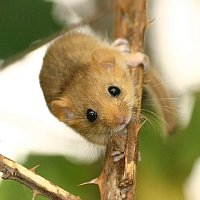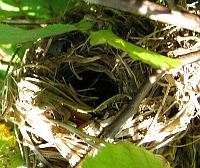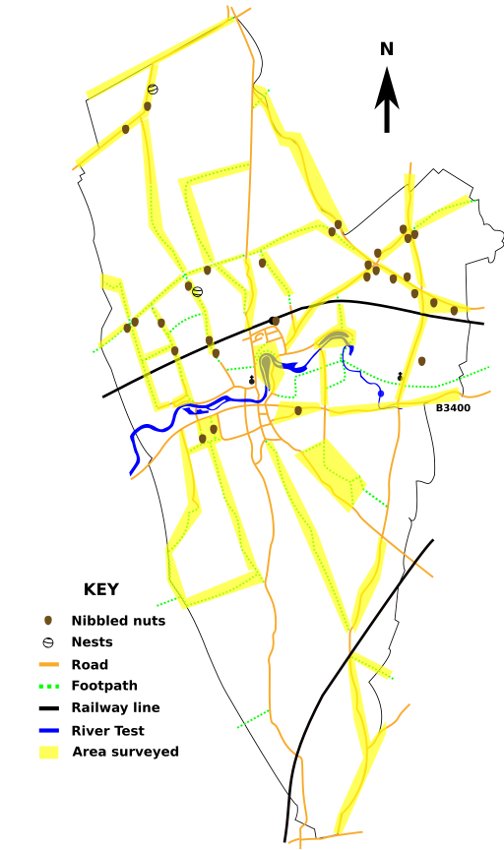The Dormouse in Overton
 The dormouse, or hazel dormouse, Muscardinus avellanarius is a small mouse-like rodent, native of Britain not to be confused with the introduced edible dormouse, Glis glis, a larger squirrel-like rodent.
The dormouse, or hazel dormouse, Muscardinus avellanarius is a small mouse-like rodent, native of Britain not to be confused with the introduced edible dormouse, Glis glis, a larger squirrel-like rodent.
The dormouse is a very small (20-30g), golden-coloured mouse with a furry tail living in mixed deciduous woodland and hedgerows. Dormice are active only at night and spend half of the year (October- April) in hibernation so that most of us are unlikely to see them. They spend winter sound asleep in small tightly woven nests in sheltered spots on the ground, protected from excessive temperature fluctuations and desiccation.
In the summer, they remain permanently in trees and shrubs as they are very reluctant to travel on the ground. They feed on the nectar of flowers (hawthorn, honeysuckle, crab apple), fruit and berries (bramble, yew, chestnut), nuts (hazelnuts), insects (aphids and caterpillars on sycamore, oak, ivy) and buds. They build nests made of honeysuckle bark mixed with various leaves where they sleep in the daytime and raise their young.
Although the dormouse is well established in British popular culture its status in the wild is more precarious. Numbers have declined by at least half during the past 100 years in England and Wales so that now it is present only in the southern counties of England and only in small numbers.
How to survey?
The easiest way to ascertain the presence of dormice is to look for gnawed hazelnuts. If hazel shrubs are present in a dormouse habitat, dormice will invariably feast on the nuts in autumn before going into hibernation and leave gnawed nuts as evidence. Because dormice carve a characteristic hole through the nut shell in order to reach the nut, a simple examination with a magnifying glass of a gnawed hazelnut collected on the ground can reveal whether the nut was gnawed by a dormouse.
- The dormouse carves a virtually smooth inner rim and the teeth marks on the nut surface are at an angle to the hole.
- The wood mouse leaves parallel teeth marks on the inner rim and rough marks on the nut surface.
- The bank vole leaves neat parallel grooves on the inner rim, but no teeth marks on the nut surface.
- Squirrels crack nuts which will look very variables but always with smooth lines.

Results
OBS volunteers collected gnawed hazelnuts throughout the parish in autumn 2009, 2010 and 2011. After examination, 135 dormouse-nibbled nuts were identified, from 30 sites as presented on the map below. Dormouse signs were predominantly found along the Harrow Way, an old Roman road. This ancient track resembles an elongated woodland that provides a good habitat for local dormice.
In addition to nibbled nuts, 3 dormouse nests were also observed, including one from which a dormouse came out in broad daylight to the surprise and delight of the small group of 'nut hunters' present!

Notes
A full report is available from our online library in the 'resources' section of this web site.
Pictures:
Dormouse by Björn Schulz — Published under the Creative Commons Attribution-Share Alike 3.0 Unported license.
Dormouse nest by Véronique Kerguelen — Published under the Creative Commons Attribution-Share Alike 3.0 Unported license.
Nuts by Adam Trickett — Published under the Creative Commons Attribution-Share Alike 3.0 Unported license.
